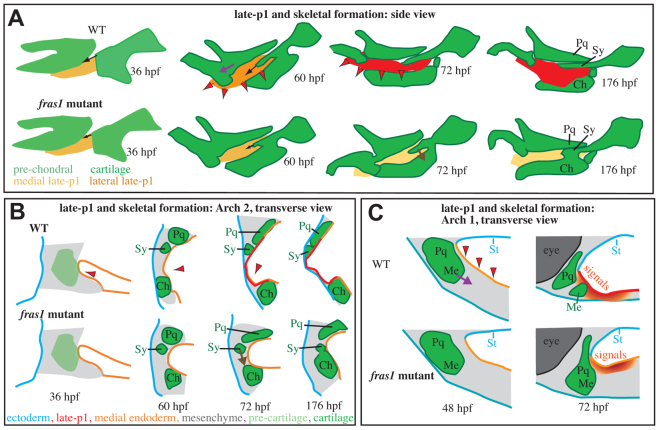Fig. 8.
fras1-dependent late-p1 formation stabilizes zebrafish skeletal development. (A-C) The movement of late-p1 is primarily across a plane (sagittal, A) orthogonal to the primary plane (transverse, B,C) of cartilage morphogenesis. These processes are intertwined in three dimensions. (B) In the second arch, late-p1 formation brings endoderm through space previously occupied by symplectic precursor cells, and into a region that separates symplectic from ceratohyal. (C) In the first arch, late-p1 formation brings endodermal signaling cues (red-orange gradient) closer to the first arch joint precursors, and might pull Meckel's and palatoquadrate cartilages apart from one another. Late-p1 formation fails in fras1 mutants, potentially reducing the forces that separate first arch cartilages, and leaving the first arch cartilage joint precursors distant from endodermal signaling cues. Red arrowheads indicate late-p1 movements. Arrows indicate skeletal movements between time points: Sy growth (black), Sy fusion (brown) and Me-Pq separation (purple). Ch, ceratohyal; Me, Meckel's; Pq, palatoquadrate; St, stomadeum; Sy, symplectic.

